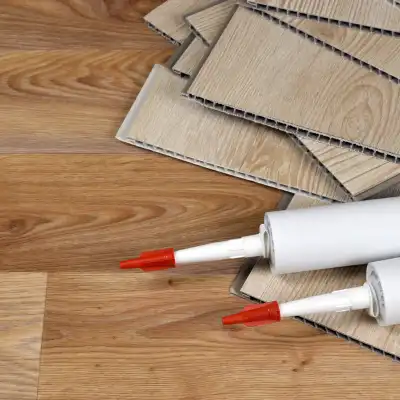Mr. Handyman has been helping homeowners repair, maintain, and enhance their spaces for over 25 years! We are the one-stop solution for everything on your to-do list. This includes answering your questions about home repairs, maintenance, and improvements. Here are answers to some of your most frequently asked questions about linoleum flooring services.
What is linoleum flooring called now?
While you can still find traditional linoleum flooring from some flooring manufacturers, many manufacturers are now using terms like “resilient flooring,” “natural flooring,” and “bio-based flooring” to describe both linoleum and similar types of flooring. That’s because true linoleum is made from natural materials, including linseed oil, cork dust, wood flour, tree resins, and natural pigments.
What is the difference between vinyl and linoleum?
Vinyl and linoleum are both popular types of flooring but are made of very different materials. Linoleum flooring is made from natural renewal materials like linseed oil, wood flour, and cork dust. Its eco-friendly composition makes it a biodegradable and sustainable floor choice. The color and patterns on linoleum floors run through the entire material, which helps it keep its appearance even with a lot of wear.
Vinyl flooring, on the other hand, is a synthetic product made primarily from PVC (polyvinyl chloride) and other artificial materials. Its colors and patterns are printed on the surface and protected by a wear layer. It isn’t biodegradable and often costs less than linoleum. Vinyl also has good water resistance, which makes it a popular choice for basements and bathrooms.
What is a linoleum floor?
Linoleum is a type of flooring that is natural and made from renewable ingredients. Its primary ingredient is often linseed oil (which gives linoleum its name), which is combined with other natural materials like cork dust, wood flour, tree resins, and natural pigments. These ingredients are mixed and pressed onto a backing material to create flooring sheets or tiles.
Linoleum floors are prized for their durability. They can last up to 40 years or more with good care and maintenance. Their color and patterns extend all the way through the material, so they won’t wear off with time. Linoleum floors work in many areas of the home, including kitchens, bedrooms, living rooms, dining rooms, bedrooms, and hallways.
Does anyone use linoleum anymore?
Yes, floors made of linoleum are experiencing something of a comeback. While linoleum flooring fell out of fashion around the 80s and 90s, it’s undergoing a revival due to its eco-friendly composition, durability, and more modern design options. Environmentally conscious homeowners and designers, in particular, have been embracing linoleum of late.
Major flooring manufacturers continue to produce and innovate with linoleum, creating new looks in sophisticated patterns, colors, and styles.
Can you still get real linoleum?
Yes, real linoleum flooring is still readily available from many major floor manufacturers. It’s sold under various brand names and comes in both sheet and tile formats. If you’re interested in putting a linoleum floor in your home, make sure you find true linoleum, which is made from natural materials like linseed oil, cork dust, wood flour, and tree resins.
You can likely find linoleum at flooring specialty stores, sustainable building material suppliers, some home improvement centers, and professional flooring contractors.
 Click to call
Click to call


 Click to call
Click to call
